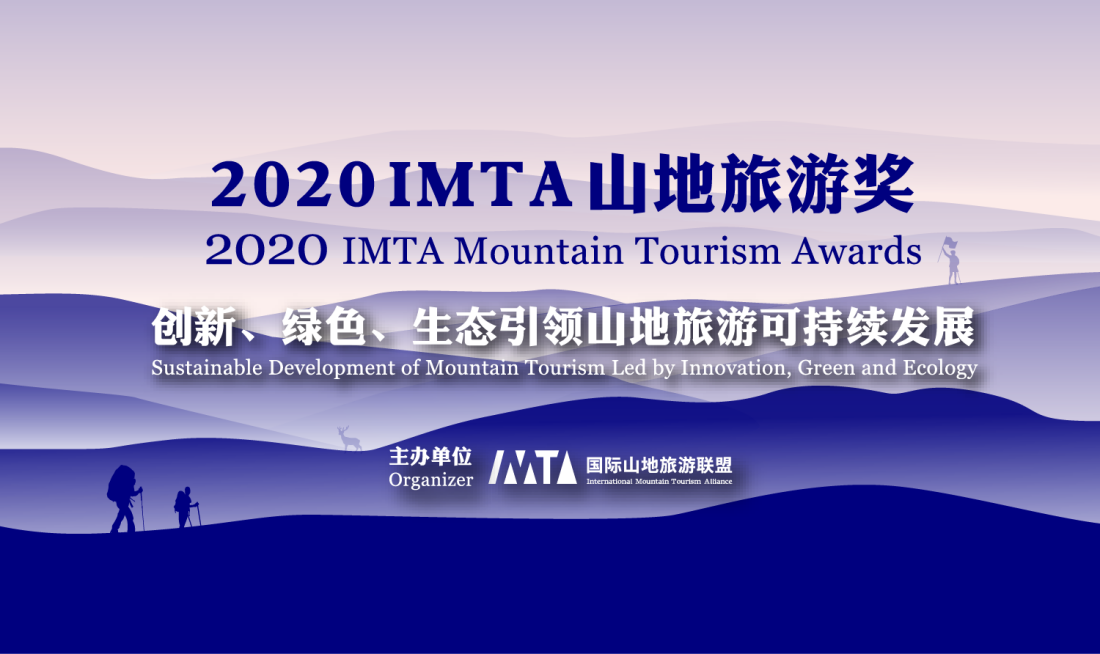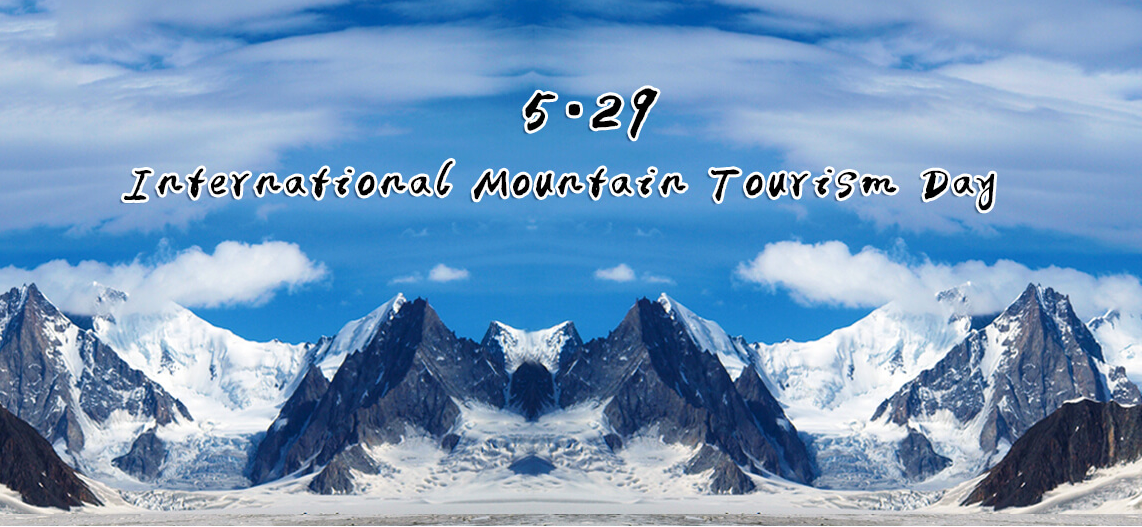On May 29, the 2025 “International Mountain Tourism Day 2025” event, themed “Embracing Mountains and Seas, Coexisting with Cultures—Mountain Tourism and Cultural Inclusiveness for the Future,” was successfully held in Gran Canaria, Spain. The Asia-Pacific Mountain Tourism Development Report, jointly compiled by the International Mountain Tourism Alliance (IMTA) and the Pacific Asia Travel Association (PATA), was officially released at the opening ceremony, providing a strategic and practical action guide for global sustainable mountain tourism development.

Peter Semone, Chairman of PATA Releases the Asia-Pacific Mountain Tourism Development Report (2025 Edition)
Peter Semone, Chairman of PATA, stated during the report launch that the report deeply analyzes the complex development landscape of mountain tourism in the Asia-Pacific region under the background of global tourism recovery and the deepening trend of sustainable development. Focusing on key issues such as climate change, ecological conservation, cultural heritage, and tourism governance, the report systematically proposes six sustainable development strategic pathways, offering professional insights and policy references for mountain tourism governance and providing innovative guidance for industry stakeholders.
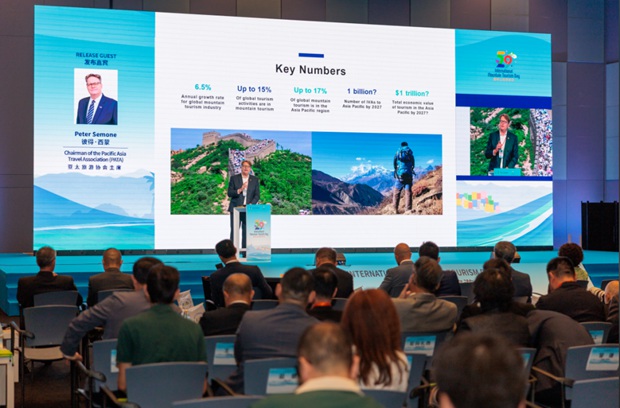
Scene from the Event
The report highlights that the Asia-Pacific region boasts diverse mountain formations and abundant cultural and ecological resources, spanning vast mountain systems such as the Himalayas, Indochina Peninsula, and Papua Highlands. The diversity of tourism resources and profound cultural heritage underpin the continuous emergence of nature-culture integrated mountain tourism products, presenting diversified, experiential, and digitalized development trends. Among these, new tourism models such as outdoor adventure, soft adventure, wellness tourism, and gastronomy tourism stand out prominently, rapidly evolving the supply and demand landscape and offering a more diversified value and experience mix to the market. Mountain tourism is not only culturally and environmentally significant, but economically vital. According to PATA forecasts, by 2026, international arrivals are expected to surpass 900 million, with tourism expenditures nearing USD 1 trillion. Mountain tourism accounts for 17% of this figure. Globally, mountain tourism attracts approximately 375 million visitors annually, contributing 15%-20% of global tourism revenue.

Nepal · Annapurna Image Source: Nepal Association of Tour Operators (NATTA)
The report reveals mounting threats to the achievements of mountain tourism development. Key concerns include biodiversity loss (up to 30% in some mountain ecosystems), widespread glacial retreat, and increased natural disasters such as avalanches, landslides, and floods. Projections within the report suggest that up to two-thirds of Himalayan glaciers could disappear by 2100 under current warming trends. The tourism infrastructure in many mountainous regions is also underdeveloped, particularly in more remote or lower-income areas, which heightens safety concerns and limits economic potential.
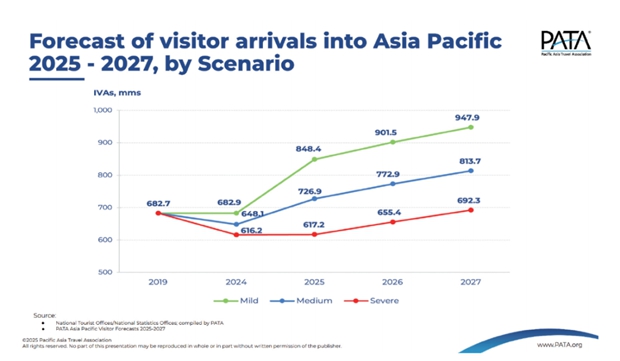
Official Forecast of Inbound Visitors to the Asia-Pacific Region for 2025-2027 by PATA Image Source: Report
Technological shifts are also reshaping the sector. As the report notes, 63% of travel transactions worldwide were made online in 2023, and the global digital travel market is forecast to exceed USD 1 trillion by 2030. While such platforms expand reach, the digital divide remains a key constraint in many mountain communities that lack sufficient connectivity, training, and access to digital tools.
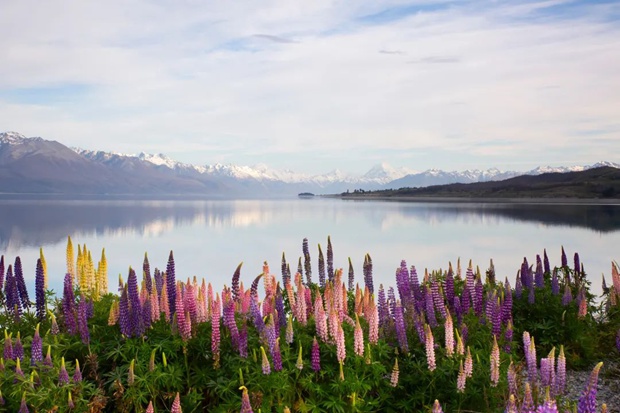
New Zealand · Mount Cook
The report positions IMTA as a central actor in addressing these challenges. Founded in 2017, IMTA is dedicated to the sustainable development of mountain tourism with the mission of “protecting mountain resources, preserving mountain civilization, and promoting the mountain economy to the benefit of mountain communities.” Through establishing dialogue platforms for members, conducting research on mountain tourism industry development, and deepening collaboration with international tourismrelated organizations, IMTA continuously promotes the prosperity of global sustainable mountain tourism.

China·Tibet Kangchenjunga
Drawing from in-depth research and expert consultations, The Asia-Pacific Mountain Tourism Development Report outlines a coordinated strategic response. Key recommendations include: Sustainable Destination Management (e.g. visitor zoning, eco-certification, community-led enterprises); Climate Change and Response Strategies (e.g. carbon-neutral infrastructure, reforestation, early warning systems); Infrastructure Development and Smart Connectivity; Cultural Heritage Preservation (e.g. indigenous tourism, experiential learning, local crafts); Capacity Building, Education, and Research; Policy and Governance Frameworks. By integrating these priorities into the overall strategic planning of the Asia-Pacific mountain tourism industry, with IMTA’s leading, engaging national and local tourism stakeholders, the region can elevate its leadership in sustainable mountain tourism. As emphasized throughout the report, a collaborative, inclusive, shared, and innovative approach will ensure that mountain tourism not only endures but thrives and enriches communities and conserves shared mountain ecological landscapes for generations to come.
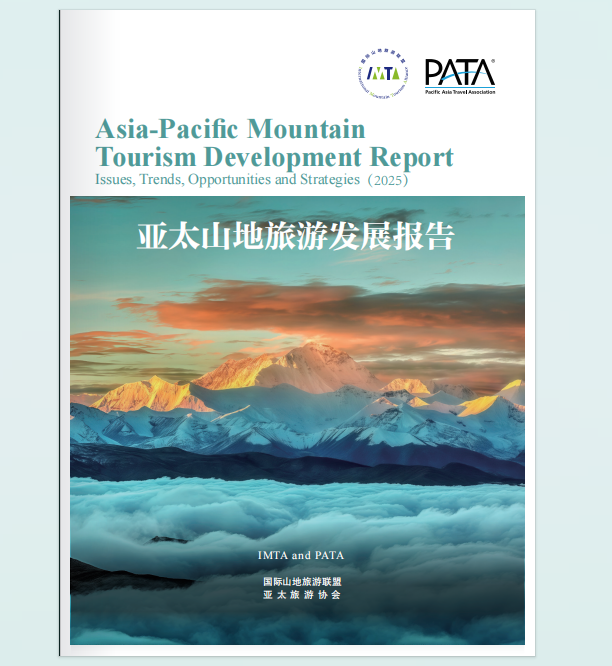
Source: IMTA
Editor Ⅰ: Zhang Wenwen
Editor Ⅱ: Bao Gang
Editor Ⅲ: Liu Guosong




